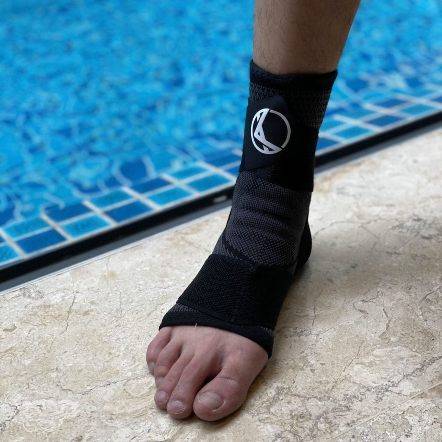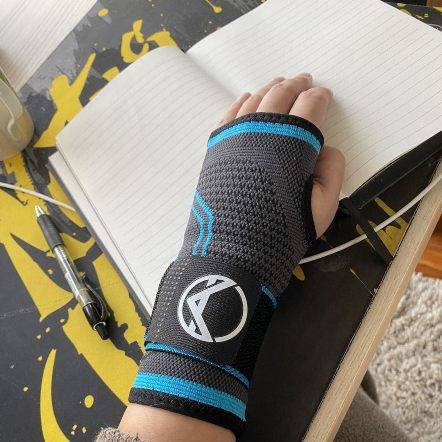
October 23, 2023 | 3 Mins Read
TABLE OF CONTENTS
Your knee, a marvel of human engineering, bends and straightens countless times every day. Whether it's chasing after your kids, going up the stairs, or simply walking—your knees are in perpetual motion. But when the pain creeps in during these movements, it may indicate a deeper issue.

Knee pain comes in different forms, which depend on its cause, how bad the injury is, general health, and activity. Here's a simple breakdown:
1. General Knee Aches: This pain can come and go or be steady. It might feel like a dull ache or a sharp pain, sometimes with swelling or difficulty moving.
2. Stiff Knee: Suddenly finding it hard to move the knee, often because of knee injuries or blockages.
3. Kneecap Pain: Discomfort at the back of the knee, especially when using stairs. This can mean the kneecap isn't aligned right or the cushioning (cartilage) is worn out.
4. Sudden Knee Pain: A sharp or dull pain at the back of the knee can be due to things like Baker’s cysts, issues with the ligaments, or injuries at the back of the knee pad.
5. Side Knee Pain: Pain on the outside (lateral) or inside (medial) of the knee can be due to conditions like arthritis, ligament problems, or swelling.
6. Popping Sounds: Knee noises are usually okay, but if there's also pain or swelling, see a doctor.
7. Weak Knee: If the knee suddenly or slowly loses strength, it might be due to ligament problems or even issues with the back.
Knowing why your knee hurts can help in finding an effective remedy. Here are some common causes:
1. Cartilage Wear: The smooth layer that lets your knee move easily can get damaged from overuse, accidents, or just wearing out.
2. Ligament Damage: Ligaments join bones together and give stability. If they're hurt, moving the knee can be painful.
3. Meniscal Tears: These cushion-like parts between the thigh and lower leg bones can get torn, leading to swelling and problems moving the knee.
4. Tendon Problems: Tendons, which connect muscles to bones, can get hurt from overdoing activities, accidents, or certain diseases.
5. Muscle Imbalance: When the knee doesn't work in harmony, it can cause pain.
6. Nerve Issues: If the nerves in the knee are hurt, it can mess up how the knee works. This can come from injuries near the knee or back problems.
7. Bone Injuries: Accidents can hurt the bones in the knee, leading to conditions like bone swelling or loss of blood supply.
8. Referred Pain: Sometimes, the pain you feel in the knee is actually from a problem somewhere else, like nerve issues in the lower back.
It’s important to seek help from your doctor in discovering the cause of your knee pain so you can develop a holistic treatment plan.

Compression socks offer relief and support for various medical conditions.
It's important to consult with a healthcare professional or orthopedic specialist for an accurate diagnosis and tailored treatment plan. They can help determine the cause of the pain and recommend the most appropriate interventions for your specific situation.
Wearing knee sleeves can offer relief for various knee issues by providing compression, warmth, and support. They can help reduce swelling and instability, promote blood flow for healing, and offer a sense of support during activities. For general discomfort, stiffness, and minor injuries like meniscal issues, knee sleeves can provide valuable benefits.
The Koprez Knee Sleeve is the top choice for dealing with knee pain when you bend or straighten your knee. The sleeve combines targeted compression with warmth to ease the pain of moving the knee. These features work together to soothe the knee and improve circulation in the area, which speeds up the healing process.
References
Author

Claire Evans worked as the content marketing manager at Koprez. Claire combined a background of writing and editing, marketing, and patient education to best serve consumers, fitness enthusiasts, athletes, and anyone who relies on the Koprez brand for helpful information.
Koprez® Featured Products


"I sprain my wrist super often, so I decided to try out this sleeve. This is game-changing! I've been using it for a while now, and my wrists feel amazing. I haven't gotten in any injuries since using it too. It just makes my wrists feel so supported."
Alexis A.


"Use this for my boxing training. It is a very comfortable brace and does not move out of position during skipping ropes and sparring sessions. I use it while running too. Probably the best brace I've purchased throughout the years. It is very flexible. Makes me look like a pro! :)"
Samuel L.


"I've just got back to running after a couple of years of being plagued by injury. These compressions socks are helping give me peace of mind while I build up my distance again. They are the perfect level of compression, super comfy, and very high quality. Feel great while on a run, and looks great in the orange colour I have!"
Dave R.


"I have a weak ankle, and the Koprez ankle sleeve has been a lifesaver. Wear it every day. Super breathable and comfortable. Like wearing a cool sporty looking sock!"
James F.


"This is the best knee sleeve I've ever tried. It's now a must-have for all my exercises. A few years ago, I had an accident that damaged my knees, but with Koprez I can be active again with no knee pains at all. It's been truly amazing!"
Alex M.


"One of the best purchases I've ever made. It fits your legs all the way from top to bottom, great snug fit, gives you support and definitely helps during rehab and training."
Rafael A.


"I had a minor elbow injury, and Koprez sleeve was super supportive and definitely helped me recover faster. I still use the sleeve to prevent further injury. So far, so good. Very comfortable and does not feel hot at all. Highly recommend!"
Corey B.


"It's really been a game-changer for me. It allows me to exercise a lot longer than I used to. Now my knees don't hurt, and they're not uncomfortable at all."
Mike P.


"Great product!!"
Harold


"I have carpal tunnel, and this brace has helped me work pain-free. Love the materials, and I can feel my wrists slowly getting better, even when I don't wear them!"
Christopher J.


"I wanted to try out these sleeves to improve my squats and deadlift in the gym without worrying about injuring my knees. They stayed up throughout the entire gym session, and my knees feel super supported. Now I can do what I love for years to come. "
Corbin C.